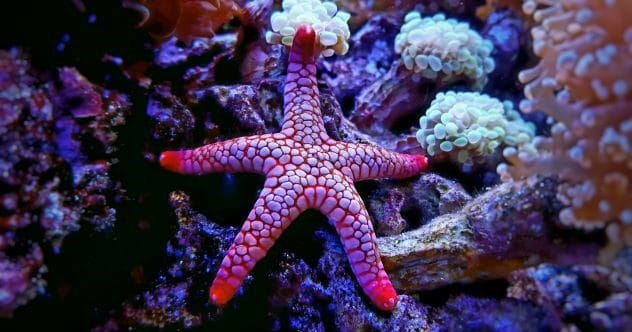The ocean, a realm of mystery and wonder, holds secrets that extend far beyond its breathtaking beauty. For centuries, it has captivated explorers and scientists alike. Its crushing depths and diverse ecosystems are now revealing groundbreaking medical potential. Marine life, thriving in extreme conditions, has developed unique compounds with surprising benefits for human health. Let’s explore ten remarkable medical breakthroughs sourced from the ocean’s depths!
10. Snail Venom: A Painkiller 1,000 Times Stronger Than Morphine
The Pacific cone snail, with its seemingly harmless name, possesses a potent venom. Research led to the creation of Prialt, a drug derived from this venom. Smithsonian Magazine notes its venom’s “poisonous harpoon-like stingers can paralyze and kill fish and humans.” Prialt has shown to be 1,000 times more powerful than morphine in relieving pain, without the addictive side effects. This incredible discovery offers hope for those battling chronic pain. Prialt has been approved by the FDA and is currently used around the world.
9. Sea Sponges: A Breakthrough in AIDS Treatment
Sea sponges, unassuming creatures of the sea, contain biochemical compounds with antiviral properties. Organic chemist Werner Bergmann discovered these chemicals, which led to the development of AZT, a groundbreaking HIV drug. Michigan Medicine explains how “HIV uses Nef to avoid blowing its cover”, but substances from sea sponges interfere with Nef, stopping it from working. Approved by the FDA, AZT became a vital tool in combating the AIDS epidemic in the 1980s.
8. Horseshoe Crabs: Ensuring Vaccine Safety
Horseshoe crabs, ancient mariners with bright blue blood, play a crucial role in modern medicine. Their blood contains immune cells that are exceptionally sensitive to toxic bacteria. According to the Natural History Museum, horseshoe crab blood contains important immune cells that are “exceptionally sensitive to toxic bacteria.” This sensitivity is used to test vaccines for contaminants, ensuring their safety. Since the 1970s, this method has been essential in delivering safe vaccines to billions worldwide, preventing potential harm from contaminated batches.
7. Marine Worms: Revolutionizing Blood Transfusions
Marine worms may hold the key to solving blood supply shortages. Hemoglobin from marine worms has shown potential as an efficient oxygen carrier with anti-inflammatory, antibacterial, and antioxidant properties. The National Library of Medicine published a study showing that the hemoglobin derived from marine worms’ red blood cells is “an efficient therapeutic O2 carrier with potential anti-inflammatory, anti-bacterial, and antioxidant properties.” Unlike animal blood, marine worm blood doesn’t trigger allergic reactions or kidney damage, making it a promising alternative for blood transfusions and organ preservation.
6. Cyanobacteria: Disrupting Cancer Cell Growth
Cyanobacteria, common in the ocean, produce compounds that can disrupt cancer cell growth. Gatorbulin-1 interferes with cell division, hindering the duplication process crucial for cancer cells. Dolastatin 10, another compound, has been the basis for three FDA-approved drugs targeting lymphomas and bladder cancer. These discoveries highlight the potential of marine bacteria in cancer treatment.
5. Starfish: Combating Inflammatory Diseases
Starfish possess a unique ability to keep their surfaces clean, preventing other marine life from sticking to them. A BBC News article states that starfish may be the missing link to finding a “new treatment for inflammatory conditions such as asthma, hay fever, and arthritis.” Scientists are studying the “slimy goo” that covers their bodies to develop treatments for inflammatory conditions like asthma, arthritis, and hay fever. By mimicking this natural defense, researchers hope to create innovative therapies.
4. Sea Squirts: Powerful Anti-Cancer Benefits
Sea squirts produce a potent anti-tumor drug called ecteinascidin, thousands of times more powerful than existing cancer treatments. Harvard University researchers found that sack-like sea squirts living on the sea floor make a complex anti-tumor drug hundreds to thousands of times more powerful than any cancer potion now in use. Initially difficult to produce in large quantities, a synthetic version, trabectidin, has shown high survival rates in patients with advanced soft tissue sarcomas. The sea squirt’s contribution underscores the potential of marine life in cancer therapy.
3. Phytoplankton: Fighting Off Muscle Damage
Phytoplankton, tiny algae floating in the ocean, are rich in antioxidants that can reduce muscle damage. A study published in the National Library of Medicine showed that athletes taking phytoplankton supplements experienced less muscle damage and improved recovery after strenuous exercise. This suggests that phytoplankton could enhance performance and recovery in high-stress environments.
2. Bryozoan: Hiding Anti-Cancer Compounds
Bugula neritina, a moss-like sea creature, contains Bryostatin 1, an anticancer drug that can stop rapid cell growth. Although difficult to extract without harming the environment, researchers have developed more efficient production methods. Clinical trials show promise for Bryostatin 1 in treating cancer, Alzheimer’s disease, and strokes, showcasing the therapeutic potential of this marine animal.
1. A World of Possibilities in Our Oceans
The ocean holds a vast and largely untapped reservoir of potential medical breakthroughs. The constant evolution and resistance of diseases, it’s important to continue searching for new, effective medical treatments. A study published by the National Library stated that the ocean has “more than 13,000 molecules described out of which 3,000 are having active properties,” indicating the plethora of medical breakthroughs still hiding underwater. Protecting marine ecosystems is crucial. As the National Oceanic and Atmospheric Administration emphasizes, preserving the ocean’s health ensures our own survival and access to future medicines.
The ocean’s depths are revealing an array of medical marvels, from potent painkillers to cancer-fighting compounds. These discoveries highlight the importance of marine research and conservation. As we continue to explore and protect our oceans, we unlock new possibilities for improving human health and combating disease.
What do you think is the most amazing discovery? Leave your comment below!










